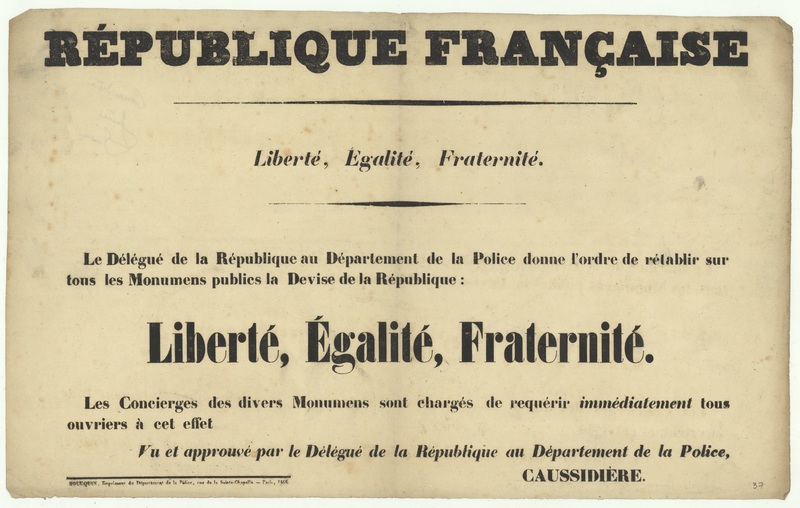Posters of the 1848 French Revolution
1848 was a year of dramatic change in Europe. A series of revolutions swept across the continent, changing the lives of millions of people and forever altering the nations in which they took place. One such nation was France, where the revolutionary fever took hold and spread widely among the populace. The French Revolution of 1848 put an end to the July Monarchy and the reign of King Louis Philippe, and eventually led to the creation of the second French Republic. The Revolution introduced many changes into the lives of the French, such as the establishment of universal male suffrage as well as the creation of national workshops for the unemployed.
Once the dust settled, as is often the case when considering revolutionary movements in hindsight, many groups and individuals — especially in Paris — were not content with the outcome. The French people ultimately voted in a moderate and conservative constituent assembly, largely thanks to the votes of newly enfranchised peasants. Groups of revolutionaries and radicals felt that this conservative assembly was betraying the spirit of the revolution, and were unhappy at the interference of the government with what they felt was the obvious path for France.
The most effective weapon in both the revolutionaries' and the government's arsenal was the printing press, which was used to wage a war of ideas. Posters were rapidly printed and distributed urging people to vote for certain candidates in upcoming elections or denouncing the actions and beliefs of a rival group. These posters were printed cheaply and meant for mass distribution, and were often read aloud at the meetings of radical and revolutionary groups.
These posters were a major battleground in the the war of ideas and politics that had been unleashed in the aftermath of the Revolution. Through them, we can explore the context of Paris in 1848, with a particular view to identifying and tracing the thoughts and messages of the various groups vying for political control and influence during the tumultuous year of 1848.
This exhibit will examine several major philosophical and political themes which motivated the factions active in Paris in 1848 — all of whom felt strongly about their vision for the future of France and the French people.

